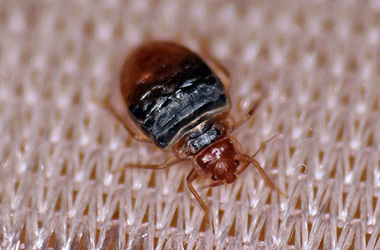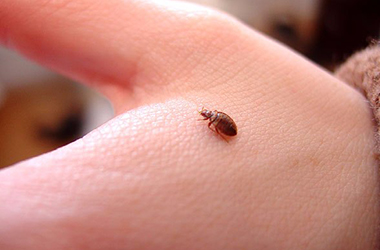Have a Bed Bugs Problem?
Or call us 0692063009
Bed Bugs are Good Hitchhikers
The assumption one must be a poor housekeeper or have poor hygiene to have bed bugs is simply untrue. Bed bugs are good hitchhikers and can easily be transported from place to place as people travel. They can hide in luggage, folded clothes, bedding, furniture, luggage, boxes, and other places. You can come in contact with bed bugs just about anywhere — in a hotel, buses and trains, and even in movie theatres. No business or residence is immune to a bed bug infestation, and they all need annual Bed Bug pest control inspections.
Although it can be difficult to eliminate bed bugs, it’s not impossible. Don’t panic. Don’t throw out all of your things because most of them can be treated and saved. Getting a Bed Bug pest control management professional involved as soon as possible rather than taking time to try to treat the problem yourself can help prevent the infestation from spreading.
Inspect & Identification
The best step is a thorough inspection and accurate identification by a qualified pest professional. Keep in mind that like most other insects, bed bugs will take harborage in any suitable crack or crevice offering protection. A cluttered home provides more places for bed bugs to hide and makes locating and treating them harder. Common harborage areas include mattresses, draperies, furniture, and unlaundered clothing.
Control / Prevention Measures
A complete integrated pest management program is essential to Bed Bug pest control and should address sanitation, material application, and exclusion. Hiring an experienced, responsible Bed Bug pest control professional is your best chance of successfully getting rid of bed bugs.
Truly Nolen’s bed bugs pest control program features a high pressure misting system that effectively pushes residential material into seams, cracks, and voids where bed bugs hide.
- Step 1: Bedding.
First, the technician treats your bedding set including the mattress, box spring, and bed frame as well as the rest of the bed bug’s primary harborage areas such as the headboard, nightstands, dressers, armoires, and upholstered furniture. - Step 2: Cracks and Crevices.
Second, the technician treats all major cracks and crevices including the areas where carpeting meets the baseboards or wall surfaces, cracks around doorframes, and where crown mouldings abut wall and ceiling surfaces. - Step 3: Wall Voids.
Next, the technician injects material into each wall void to treat the hiding bed bug population. - Step 4: Aerosol Treatment.
Finally, the technician treats any artwork or other moisture sensitive items (books, etc.) in a plastic bag, by cinching the opening of the bag and emitting a one-second blast. The contents remain sealed in the bag to allow the material to eradicate any bed bugs.
Installation of Encasement System
Truly Nolen’s Ocean County, NJ Bed Bug pest control professionals recommend the installation of a mattress and box spring encasement system on each bed following treatment in order to prevent future bed bug infestations. It is a cost effective alternative to purchasing a new bed set and is designed to protect you and your bedding. The system consists of a fully sealed cover for the mattress and box spring. The encasement system seals the bugs already in the mattress and/or box spring inside, where they will die in a few months. It also seals bed bugs out so the beds can’t be re-infested.
Follow-Up Inspection
A follow-up inspection will occur 7 to 10 days after the intensive service to ensure that the bed bug population has been eradicated. Re-inspection is required until the environment is pest free.
Feasting Facts
Bed bug infestations usually occur near areas where people sleep. Fast-moving and nocturnal, bed bugs prefer the host’s head, neck, and upper extremities. The bugs feed from three to 10 minutes until engorged and then crawl away unnoticed. During the day, they hide in the areas around the bed such as the headboard, nightstand, etc. Bed bugs prefer a human host and are attracted by body temperature, natural body odor, and carbon dioxide the host exhales.
When a bed bug bites, they inject saliva containing an anesthetic that prevents a person from realizing they are being bitten and an anticoagulant to thin the blood and increase its blood meal. Most people do not realize they have been bitten until bite marks appear anywhere from one to 14 days after the initial bite.
Emotional Consequences
Having a bed bug infestation in your home can be more than just a nuisance and may cause some homeowners significant stress, resulting in many sleepless nights. Imagine how difficult or embarrassing it might be to call friends or relatives who recently visited to tell them about your pest problem!
Medical Consequences
Bed bugs are not known to spread disease. However their presence may cause itching and lack of sleep. The bite marks are similar to mosquitoes and fleas – a slightly swollen and red area that may itch and be irritating however excessive scratching of the bite site can lead to a secondary infection. Those experiencing an allergic reaction may develop painful lesions and may require medical attention.
Call with questions – (732) 888-8276

